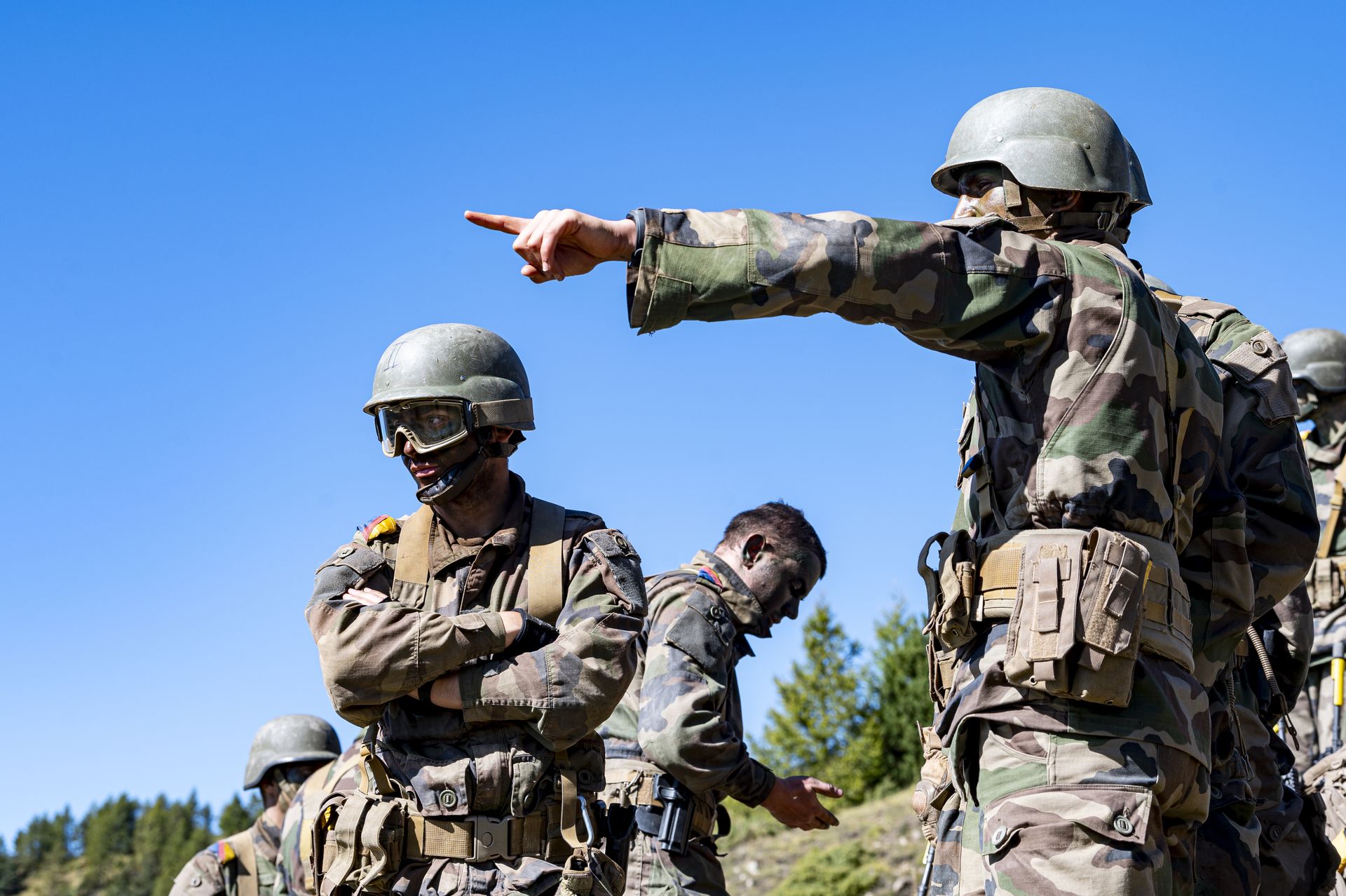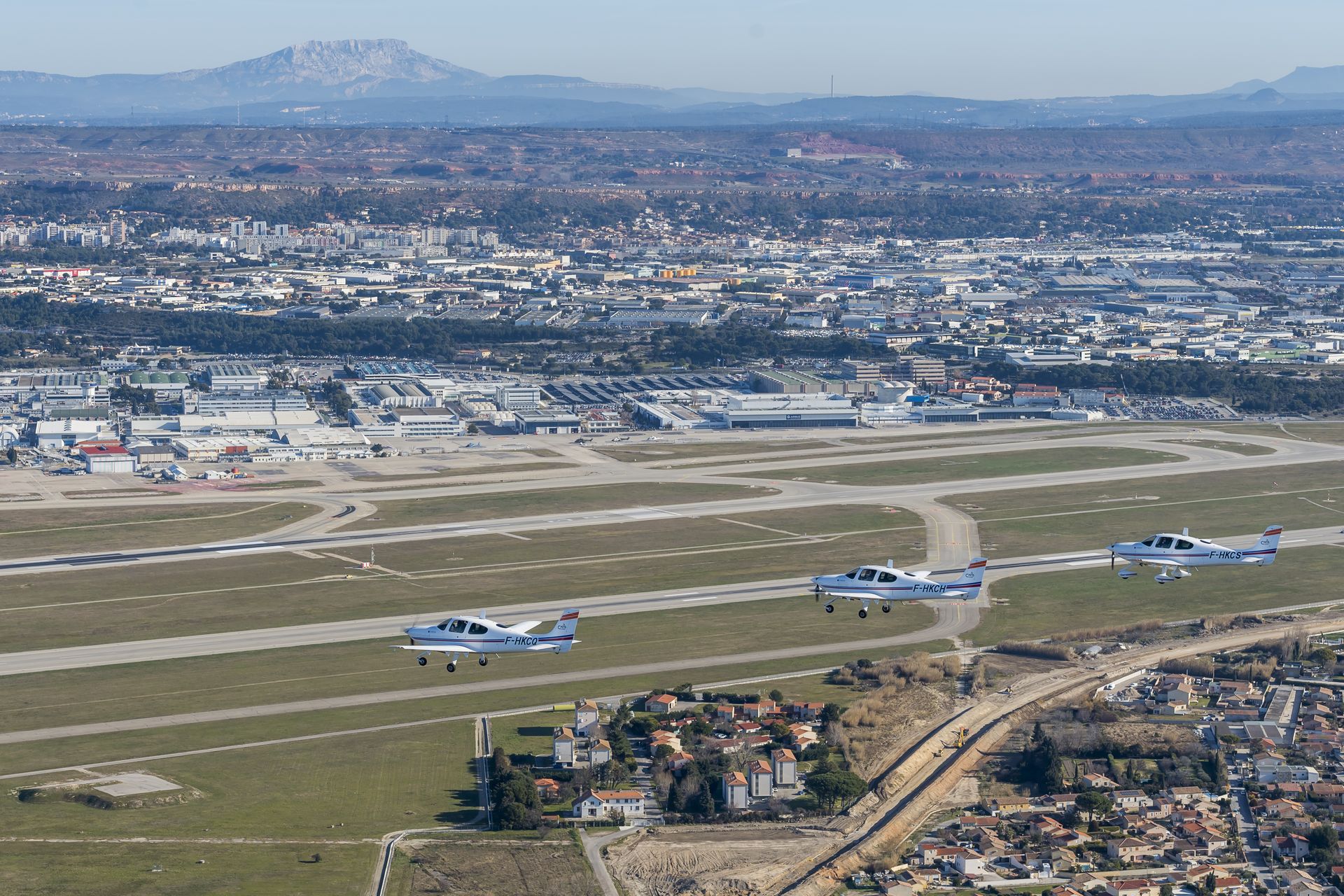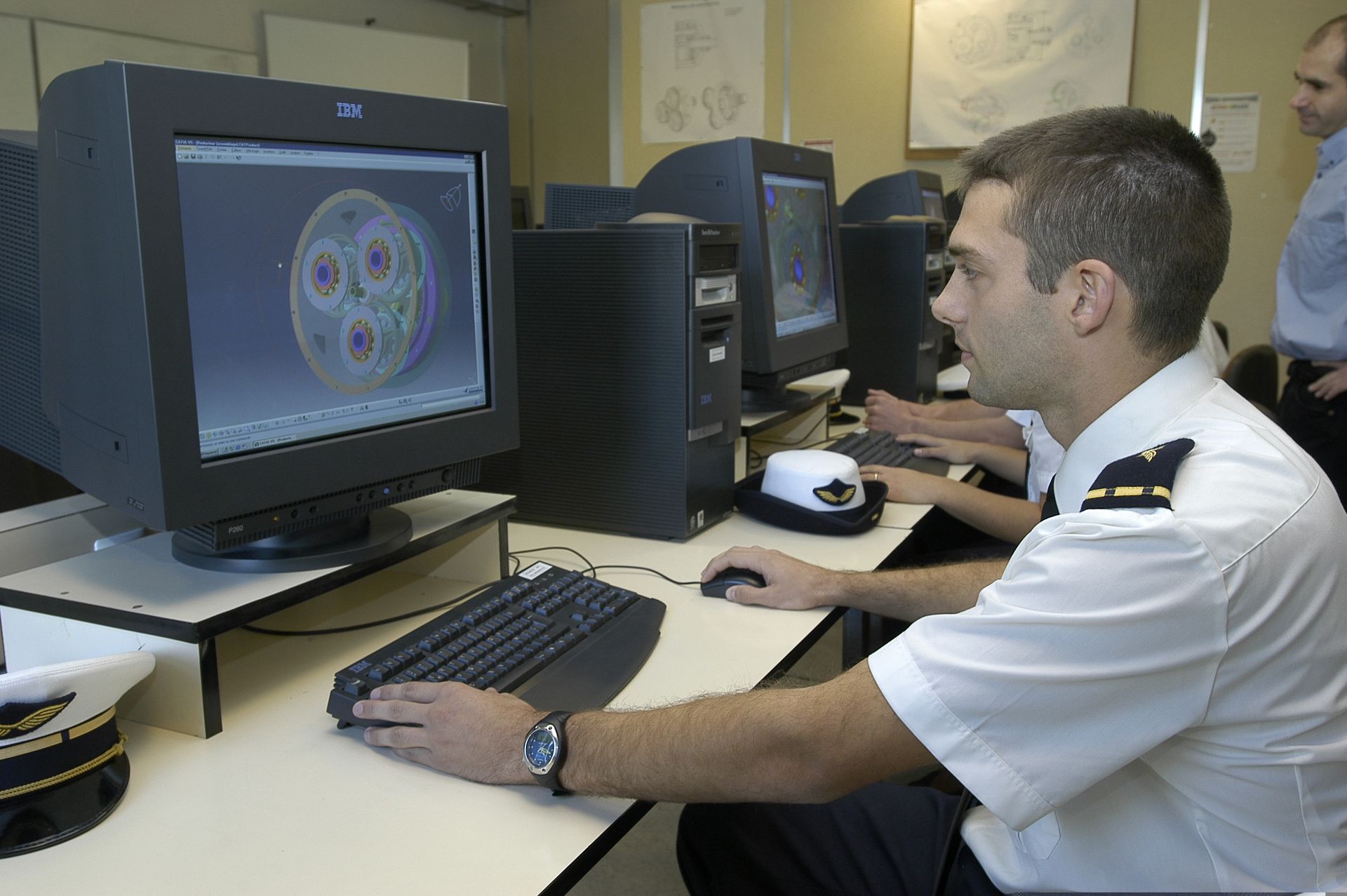Training of the airman officer
The training provided by the Air and Space School, in addition to acquiring skills specific to the aeronautical environment, develops the aptitude for command and teamwork of future officers, while instilling in them a sense of the values dear to the Air and Space Force : respect, integrity, sense of service and excellence.
The training of the aviator officer is structured around 3 essential and inseparable axes.

Training the leader and the fighter
Sports training is the basis of all military activity. This training must allow to maintain and improve the physical condition necessary for the profession of arms.
Sports activities are practiced both in brigade, in order to develop team spirit and cohesion within the promotion, but also in competition for those with a higher physical level.
From the first days, the cadets become familiar with close order (manoeuvres on foot, with or without weapons, movements on firm foot, etc.) and are introduced to all the knowledge and techniques necessary for life in the countryside and combat with or without weapons. It includes, among other things, shooting, hand-to-hand combat, military parachuting, topography, transmissions, etc.
The students are also trained in command, on the one hand by following theoretical and ethics courses, and on the other hand by real-life scenarios and progressive assumption of responsibilities.
Finally, the cadets are also actors in their own training by participating in the various mentoring and military supervision programmes or via multidisciplinary development projects. They thus develop their skills in leadership, initiative and project management.
Four options can be offered to students :
- two externally oriented tutoring programs that promote the army-nation link: equal opportunities plan tutoring (PEC) and aeronautical tutoring (Aeronautical initiation certificate - BIA) ;
- one internal tutoring program for the Air and Space Force: elementary military training tutoring (FME) ;
- one multidisciplinary activity: multidisciplinary development project (PDP).
These four options are presented briefly below :
The equal opportunities plan tutoring program (PEC) is based on the investment of officer cadets in the role of mentors for young high school students selected as soon as they enter the second year of secondary school. The objective for officer cadets is to arouse in high school students the desire and the will to continue towards higher education. Through this human experience, the approach allows officer cadets to enhance their training through the experience of close supervision in an enriching context with strong social diversity.
The aim of aeronautical tutoring or Aeronautical Initiation Certificate (BIA) is to contribute to the development of human values and the enrichment of aeronautical culture among young people attracted to this environment, or even to encourage vocations. Officer cadets participate in the Aeronautical Initiation Certificate (BIA) preparation courses organized for middle and high school students.
Officer cadets who volunteer for the Basic Military Training (FME) tutoring participate in the training of non-commissioned officers through courses dedicated to the organization of the Air and Space Force, its history, but also to aeronautics and ethics. This training takes place within the Air and Space Force Combatant Operational Preparation Center (CPOCA-AE).
The objective of multidisciplinary development projects (PDP) is to enable students to acquire multidisciplinary knowledge and skills outside the formal framework of academic courses, in EAE outreach activities. A typical PDP project consists of a set of activities forming a unit implementing human, material or service resources to achieve an objective, while respecting constraints (deadlines, a budget, a level of quality given the resources allocated).
All of this learning is common to all types of officer training.
Aeronautical training
The various squadrons of the Initial Military Aeronautical Training Center are responsible for the initial training of all flight personnel of the Air and Space Force by providing theoretical and practical instruction for the benefit of students at the French Air and Space Force Academy.

This training is divided into two areas :
- success-based training with an orientation phase (glider, tests, pre-orientation flight course), a consolidation phase allowing the acquisition of fundamental military piloting skills and validation of the success forecasts established during the orientation phase, and a specialization phase including skills-based training and adaptation of programs to the student's abilities ;
- downloading, which, based on a combat unit employment benchmark, allows for the determination of skill acquisition deadlines during the training phase, seeking to anticipate this acquisition as much as possible (e.g., the use of a system).
The Gliding Initiation Squadron provides aeronautical initiation for future flight personnel using its fleet of gliders. The objective is for students to obtain the glider pilot's license.
The 3/5 "Comtat-Venaissin" and 2/93 "Cévennes" flight instruction squadrons provide training for student pilots on the Cirrus SR20, a modern design that provides cadets with an initial introduction to system acquisition capabilities.
The 1/93 "Aunis" combat navigator training squadron is responsible for training student navigators on the Cirrus SR22, both in core training and as a pre-specialization for the transport and in-flight refueling programs. Fighter specialization is then completed in Tours, while transport or in-flight refueling training is carried out in operational units.
The Aircrew Ground Training Squadron provides theoretical training for flight crew students through the ATPL (Air Transport Pilot License under DGAC approval) for student pilots and tailored theoretical training for student navigators, foreign students, and simulator instructors.
The objective of the training provided at the Initial Military Aeronautical Training Center is to impart to the students under its supervision the knowledge, skills, and interpersonal skills necessary for pursuing an aviation career as a combat pilot or navigator within the French Air and Space Force.

Academic training
Originally founded on engineering sciences, the FASFA has since integrated political sciences and humanities into its teaching.
Courses are taught by a team of civilian and military teachers and research professors, some of whom are seconded from higher or secondary education.
Academic training is research-based and allows officer cadets to acquire the knowledge and methods essential to mastering the military aerospace field.
For the vast majority of future career officers recruited directly, it is a general engineering program with a focus on aeronautics and space, broadly open to the humanities.
Officer cadets recruited internally pursue a bachelor's degree program in a field suited to their future positions within the Air and Space Force.

